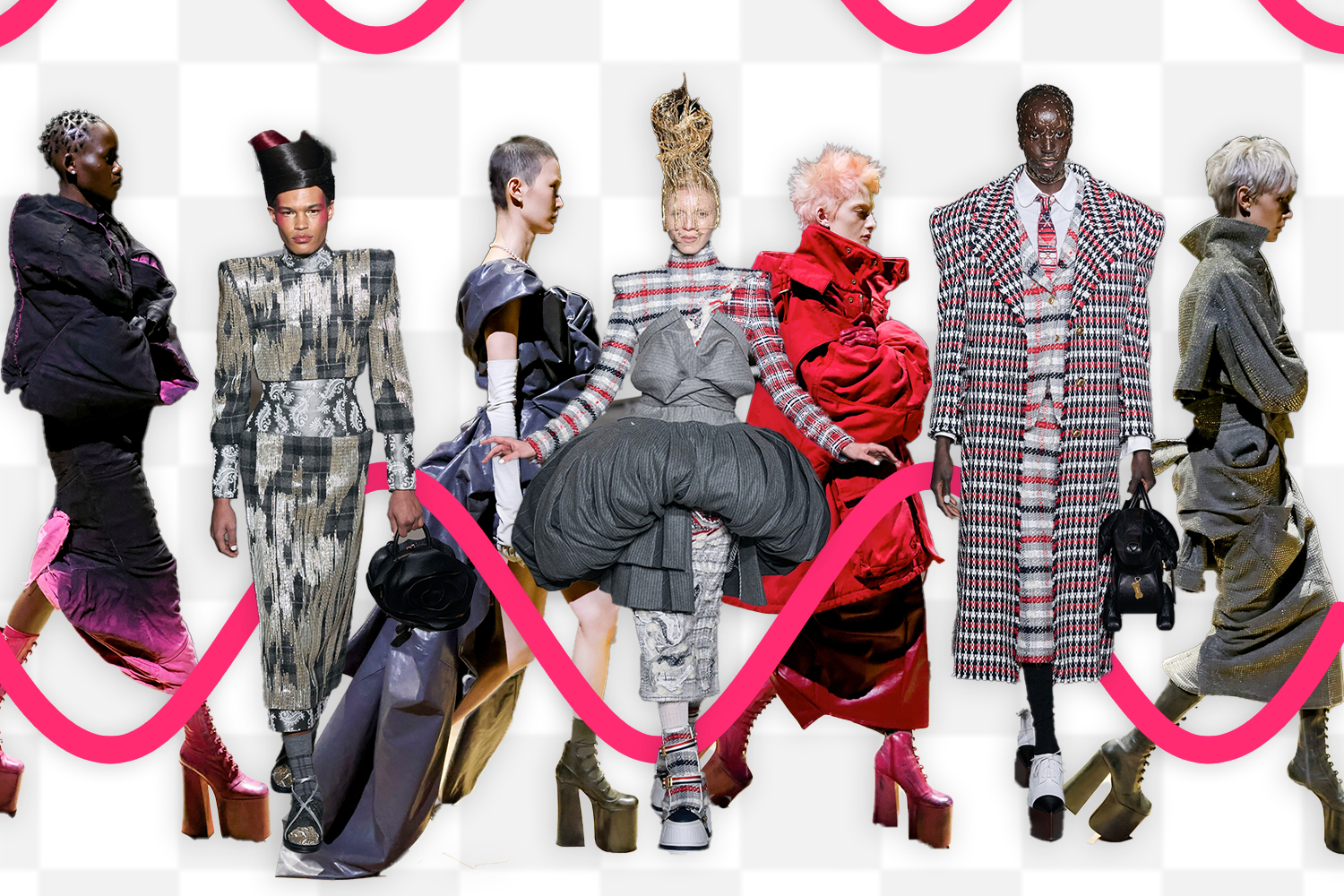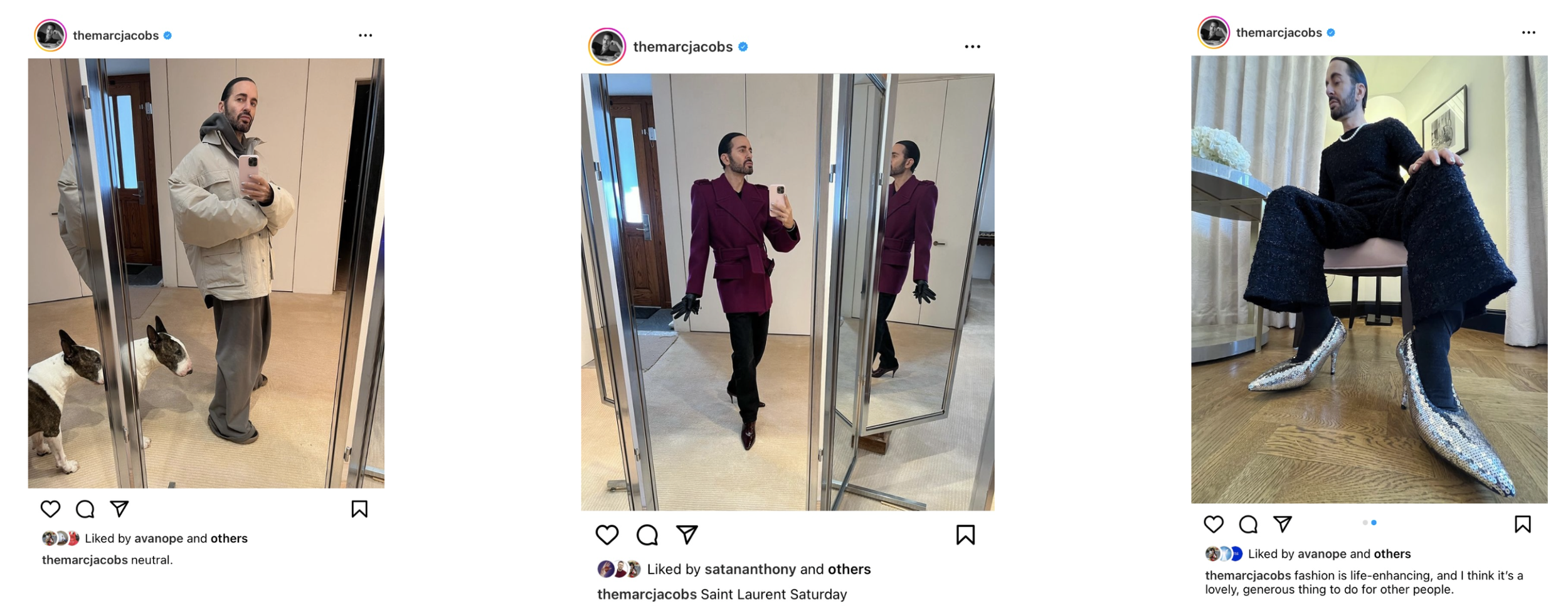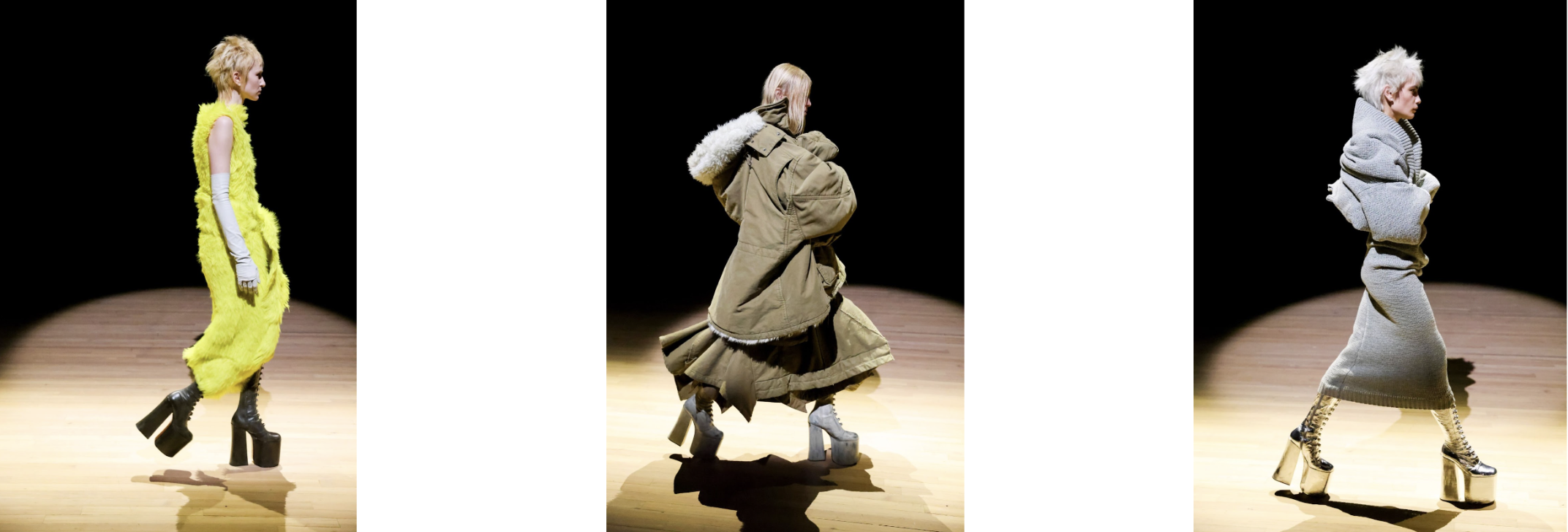New York Headliners Prove Fashion is Still Fun
Graphic by Ruth Ellen Berry.
Shouldn’t fashion be playful? This was a question a lot of New York Fashion Week designers seemed to have on their minds. February’s NYFW stood in contrast to early January’s Men’s Fashion Week, which focused on serious tailoring and reduction. Instead, New York designers presented collections that felt intentionally free.
NYFW began with an off-schedule Marc Jacobs collection titled “Heroes.” The collection was a tribute to the late Vivienne Westwood. In the show notes, Jacobs quoted Westwood: “Fashion is life-enhancing, and I think it’s a lovely, generous thing to do for other people.”
The Westwood references were evident in the punk hair, sky-high platforms and grunge styling. Jacobs also dedicated the show to “all of our heroes past, and, young heroes present.”
This is the third season in which Jacobs has continued to define a new path for his namesake label. Following a searing 2018 New York Times article that declared Jacobs had fallen out of fashion, he has proved he is back in style.
F/W 2021 was the first Marc Jacobs collection flaunting its radical new look. Instead of the downtown Manhattanite style the brand is known for, Jacobs embraced humongous silhouettes and avante-garde designs. It received immediate acclaim.
This new brand direction is fueled by Jacobs’ own love of clothing. First and foremost, Jacobs is a fashion lover. He posts daily fit pics on his Instagram and is a known lover of brands like Prada and Rick Owens.
He has embraced the designers he admires and beautifully references them in his collections. He is no longer forcefully trying to be on the cutting edge and define the new it-style. Instead, Jacobs has transcended the industry’s obsession with newness. He admits that great clothes already exist, so why not play around with them?
Jacobs reminds us of the designers who made us fall in love with fashion. His collections feel nostalgic and celebratory.
In the “Heroes” collection, the necklines recall those of Balenciaga, the military patchwork mirror Helmut Lang and the scrunched dresses look like Comme des Garçons meets Rick Owens.
Jacobs is finally being honest about what he loves … clothes! He pulls these references together without becoming a copycat. It works because he has a genuine passion for these designers and pays his respect to them. Jacobs allows himself to feel inspired by the work of his peers—past and present.
Towards the tail end of the week, on Valentine’s day, Thom Browne presented his F/W collection in New York after spending a few seasons in Paris. As the newly elected Council of Fashion Designers of America Chairman, the New York show is a requirement of the role.
Taking direct inspiration from the novella “The Little Prince,” Thom Browne’s collection took a narrative form. The intergalactic set was in a muted gray, with sand covering the stage. A crashed plane and floating planets filled the venue.
The show’s structure reflected the message of the novella that Browne described to Vogue: “children actually see more than adults do.” The show opened with a Browne-ified space suit that felt just as renaissance as it did futuristic.
Then came a lesson in power suiting. The extreme shoulders and tweed coats captured the “adults” of the story. Suddenly, the suits then became more playful and unprofessional, which Browne used as the “kids” of the story. Jackets and trousers were mismatched, and every garment seemed to be in the wrong place. The chest of a button-down shirt became a cover for a tulle skirt.
In his genius, Browne broke through the typical 2-dimensional layers of suiting: shirting, ties, and jackets on top. Instead, the shirt tore through or even became half of the jacket. In some looks, it was unclear where the jacket ended and the trousers began. In others, some trouser waistlines were draped diagonally to create a dress illusion.
It was the typical Thom Browne freaky tailoring, but he continued to prove why he is an American treasure. He can expertly tailor a typical office suit and then immediately transform it into a new silhouette. It is subversive and magical.
The most mesmerizing aspect of this collection was Browne’s commitment to the childish vision. The serious tailoring that has overtaken recent fashion weeks has become repetitive and unnecessary. Do we need to see another slouchy suit? How many times can we make a double-breasted blazer?
Yet Browne brings the excitement back to tailoring. In all the seriousness of the real world, Browne allows us to dream just as a child would. The collection felt like a practice in playing dress-up, the way a child would wander into their parents’ closet and put on a too-big suit paired with a tweed skirt.
To a child, there are no rules. Children have yet to learn society’s norms of gender and professionalism. So, instead, children see dressing as fun and imaginative. And why do these dress-up games have to only be for children? Browne does not see an issue with adults having a bit more fun.
In a season dense with trend forecasting and predictions, Jacobs and Browne created earnest collections. They were both incredible declarations of love for the art of fashion. Over the past few months, fashion has taken itself entirely too seriously. Jacobs and Browne brought passion back to an industry that has felt increasingly impersonal. They prove that fashion does not have to be haute-tailoring or wardrobe essentials to be timeless. Playfulness and a child-like imagination never go out of style.




